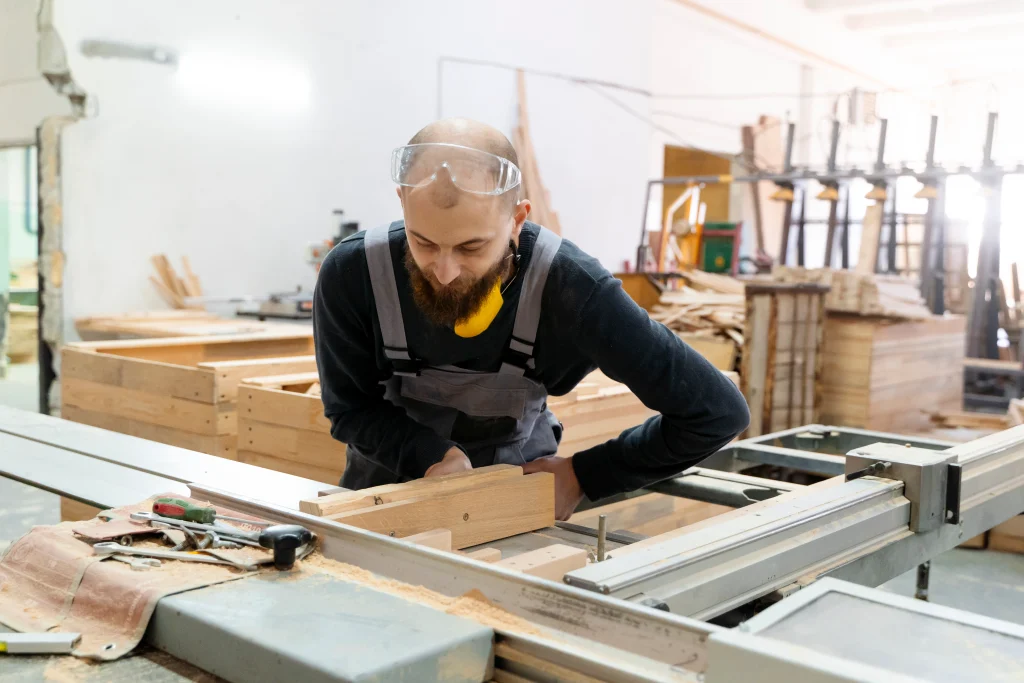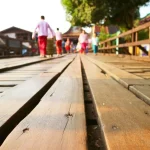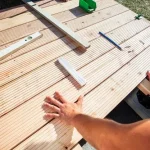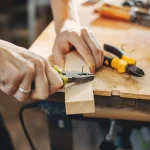What is Joinery?
First things first, what exactly is joinery? In simple terms, joinery is the craft of connecting or joining pieces of wood together to create more complex structures—think of it as woodworking’s cooler cousin. From cabinets to window frames, joinery is all around us, holding the world together, one dovetail joint at a time.
The Essential Skills Needed for Joinery
So, what skills do you need to dive into this world? Patience, precision, and a keen eye for detail are your best friends here. Joinery isn’t just about slapping two pieces of wood together—it’s about making sure those pieces fit perfectly, like a jigsaw puzzle. If you’re someone who loves solving puzzles or enjoys the satisfaction of building something with your hands, you’ve already got a head start.
Common Misconceptions About Joinery Difficulty
Let’s address the elephant in the room: the myth that joinery is impossibly hard. Sure, advanced joinery projects can be complex, but the basics? Totally doable! Many beginners are put off by the fear of making mistakes, but guess what? Mistakes are part of the learning process. Even the pros didn’t get it right on their first try. So, don’t let fear hold you back—joinery is easier than you think!
Tools and Materials: Making Joinery Easier
Must-Have Tools for Beginners
You don’t need a workshop full of expensive tools to get started. In fact, all you really need are some basic tools: a saw, a chisel, a hammer, and a measuring tape. These simple tools will get you through most beginner projects. Think of them as your “starter pack” for easy joinery—no fancy gadgets required.
Choosing the Right Materials for Simple Projects
When it comes to materials, wood is your canvas. But not all wood is created equal. Softwoods like pine are great for beginners because they’re easy to work with. They won’t fight you every step of the way, unlike some of the more stubborn hardwoods. Picking the right material is half the battle won in your journey to mastering beginner joinery.
How to Practice Safe and Efficient Joinery
Safety first, folks! Joinery is fun, but it can also be dangerous if you’re not careful. Always wear safety goggles, keep your fingers clear of the saw, and never rush through a cut. Efficient joinery is all about smooth, controlled movements—imagine you’re a Jedi, and your saw is your lightsaber. The force of precision is strong with you!
Beginner Projects to Test Your Skills
Easy Joinery Projects for Starters
Now that you’re armed with the basics, it’s time to put your skills to the test. Start small with projects like a simple bookshelf, a picture frame, or a basic box. These projects might seem simple, but they’ll teach you the fundamental joinery techniques you’ll need for more advanced work down the road.
Step-by-Step Guide to Your First Joinery Project
Let’s walk through a simple project: a wooden box. Start by cutting four equal pieces of wood for the sides. Next, use a dovetail joint to connect the corners. Don’t worry if your first attempt isn’t perfect—that’s what sandpaper is for! Finally, attach a bottom piece using glue and clamps. Boom! You’ve just completed your first joinery project. Celebrate with a happy dance—you’ve earned it.
How to Avoid Common Mistakes
Even seasoned joiners make mistakes, so don’t be too hard on yourself if things go wrong. Common mistakes include cutting pieces too short, using too much glue, or misaligning joints. The key is to learn from these mistakes. Measure twice, cut once, and remember—wood can be surprisingly forgiving.
The Path to Mastery: Tips for Improving Your Joinery Skills
Learning from Experts: Courses and Resources
Want to take your skills to the next level? Consider enrolling in a joinery course or following tutorials online. There’s a treasure trove of resources out there, from YouTube videos to detailed blogs. Learning from experts can give you the tips and tricks you need to refine your technique and tackle more challenging projects.
Joining a Community of Joinery Enthusiasts
Joinery isn’t just a solitary activity. There’s a whole community of woodworking enthusiasts out there ready to share their knowledge and cheer you on. Whether it’s through online forums, local woodworking clubs, or social media groups, connecting with others can keep you motivated and provide valuable advice.
Setting Realistic Goals for Your Joinery Journey
Like any skill, joinery takes time to master. Set realistic goals for yourself, whether it’s completing a certain number of projects or mastering a particular type of joint. Celebrate your successes along the way, no matter how small. Remember, every masterpiece starts with a single cut.
Conclusion: Is Joinery Easy? Yes, With the Right Approach
So, is joinery easy? The answer is a resounding yes—especially when you approach it with the right mindset, tools, and a willingness to learn. Whether you’re building a simple bookshelf or crafting a custom piece, joinery is a rewarding skill that anyone can master with a bit of practice.
Encouragement to Start Your Joinery Adventure
Don’t let the fear of difficulty hold you back. Embrace the challenge, enjoy the process, and watch as you transform raw wood into something beautiful. Your joinery adventure starts now!
Contact Us for Professional Joinery Services or Advice
Ready to take your skills to the next level, or need professional help with a project? Contact us at MGB Joinery for expert advice, custom joinery services, and more. We’re here to help you make your woodworking dreams a reality!
FAQs
What’s the difference between joinery and carpentry?
Joinery and carpentry are often confused, but they have distinct differences. Joinery typically involves creating items in a workshop, such as doors, windows, and furniture, which are then installed. Carpentry, on the other hand, usually involves on-site construction work like framing a house or installing items made by joiners.
How long does it take to learn basic joinery skills?
The time it takes to learn basic joinery skills can vary depending on your dedication and practice. With consistent effort, most people can learn the basics in a few weeks to a couple of months. Joining a course or working on small projects can accelerate your learning process.
Can I do joinery projects without any prior experience?
Yes, many joinery projects are suitable for beginners. Starting with simple projects like shelves or small boxes can help you build your skills and confidence before moving on to more complex tasks.
What types of wood are best for beginners in joinery?
Softwoods like pine or cedar are great for beginners as they are easier to cut and shape. They are also more forgiving of mistakes, making them ideal for learning the basics of joinery.
Do I need professional-grade tools to start joinery?
No, you don’t need professional-grade tools to start joinery. Basic hand tools like a saw, chisel, and hammer are sufficient for most beginner projects. As you progress, you might invest in more specialized tools, but it’s not necessary to start with them.






